Origin and maker of two bowls
Posted: Mon Nov 09, 2009 7:26 pm
Hi,
I recently bought two molded then repousse bowls representing mythological scenes, and I guess they are German in origin but I did not find any suitable correspondance of the marks, neither in my (too general) documentation nor in this website.
Here are the bowls:
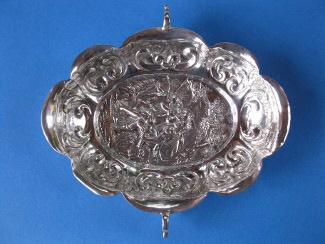
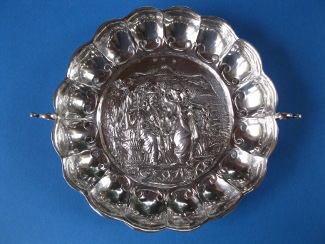
Even if the marks are a bit worn, they seem to belong to the same town and maker, which may help for the hallmarks recognition. Each bowl has 3 marks: 13 for silver purity in a rounded rectangle, a lion issant facing right in a circle, and what seems to be a grape in an oval. Considering also the way they are struck, I am almost sure that the 13 mark and the lion mark have been punched by the same person, whereas the grape mark has been punched by another one. So the town mark should be the lion mark.
Here are the marks, the first line for the first bowl, the second one for the second bowl:
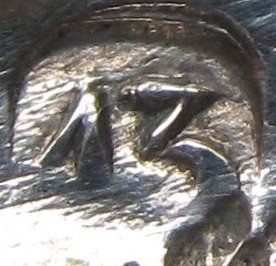
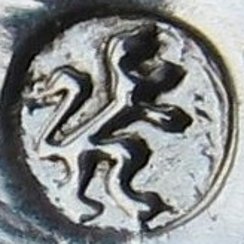
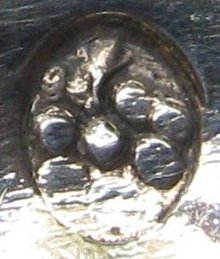

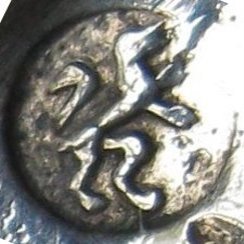
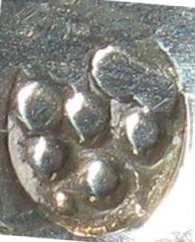
I can also add that the lion mark exhibits an outline with about 40 very tiny points: this can be noticed in the second line, above the head and the tail of the lion. May be it can help identifying this town mark.
Could somebody help as for the origin and maker of these bowls?
Dinio
I recently bought two molded then repousse bowls representing mythological scenes, and I guess they are German in origin but I did not find any suitable correspondance of the marks, neither in my (too general) documentation nor in this website.
Here are the bowls:
Even if the marks are a bit worn, they seem to belong to the same town and maker, which may help for the hallmarks recognition. Each bowl has 3 marks: 13 for silver purity in a rounded rectangle, a lion issant facing right in a circle, and what seems to be a grape in an oval. Considering also the way they are struck, I am almost sure that the 13 mark and the lion mark have been punched by the same person, whereas the grape mark has been punched by another one. So the town mark should be the lion mark.
Here are the marks, the first line for the first bowl, the second one for the second bowl:




I can also add that the lion mark exhibits an outline with about 40 very tiny points: this can be noticed in the second line, above the head and the tail of the lion. May be it can help identifying this town mark.
Could somebody help as for the origin and maker of these bowls?
Dinio